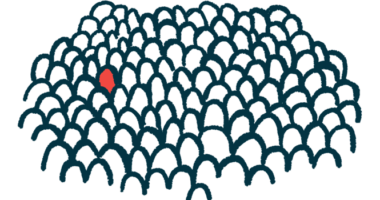With chronic illness, making ends meet is a constant struggle
Living with aHUS has a financial cost as well as a medical one

Financial woes seem to be affecting many Americans, who are having a hard time affording sky-high rent or mortgage rates on their homes. People also worry about the cost of food, child care, car payments, and many other things. Now imagine having to face these financial difficulties while being chronically ill.
In September 2020, I was at the top of my game. I was a single mom in a new city, where I had purchased my first home and flipped it. I started a new job where I was making more money then I’d ever made. I’d also just lost 110 pounds and was dating again for the first time in years.
But by mid-September, I was dying in the intensive care unit for nearly two months, with multiorgan failure. An asymptomatic bout of COVID-19 had triggered a rare disease called atypical hemolytic uremic syndrome (aHUS). My life changed in an instant. Ultimately, the harrowing ordeal caused me to lose my job, my home, and my car — basically, my entire world.
To say I struggled financially is an understatement. I applied for emergency healthcare, disability, and assistance for food costs, housing, and utilities. But the only assistance I immediately qualified for was healthcare, because I didn’t meet the work-school requirements for anything else. And I had to care for myself and two small children.
So, after more than two years of fighting, last February, I finally received Social Security Disability Insurance (SSDI). This was huge! Having funds consistently come in each month took so much weight off of my shoulders. I also began writing for aHUS News, which has helped me pay bills each month. It’s all truly been life-changing.
Déjà vu, all over again
Fast forward to this fall, and I again find myself struggling to keep up with the cost of living. Take the cost of food, for example. According to the U.S. Department of Agriculture, food prices “are expected to grow more slowly in 2023 than in 2022 but still at above historical-average rates. In 2023, all food prices are predicted to increase 5.8 percent.” Where I live, I think that number is even higher.
SSDI and Supplemental Security Income (SSI) received a cost-of-living adjustment (COLA) of of 8.7% in 2023 (to adjust for sky-high inflation in 2022), and COLA is set to be increased again by 3.2% in January 2024. According to the AARP, “the 2023 COLA will increase the average monthly SSDI benefit for a disabled worker by $119, from $1,364 to $1,483.” It added that the “average collective benefit for a disabled worker with a spouse and child (or children) receiving benefits on their record will increase in January [2023] from $2,407 a month to $2,616.” It’s worth noting that the Department of Health and Human Services set the federal poverty level — which is used to determine eligibility for certain programs and benefits — in 2023 for a family of three at $24,860 a year.
All of this is to say that I don’t understand how anyone is expected to live like this and it’s very frustrating. I know several patients with my disease or other illnesses who don’t qualify for assistance of any kind. Or they can’t afford to wait two or three years to be granted a meager SSDI income. They continue to work full-time jobs while trying to balance medical issues, doctor appointments, medication and other treatments, and day-to-day life.
As frustrating as the situation is, the experience has forced me to hone my money-saving skills. I’ve been an extreme “couponer” since I had breast cancer in 2007. It’s always been exhilarating for me to leave a grocery store with an overflowing cart for only a couple of dollars. But now more then ever, saving money is a necessity.
I’ve expanded my couponing for not only groceries but also medications, clothing and shoes, utilities, housewares, vacations, events, and everything else in my family’s life. I also thrift shop and even use discount and cash-back apps for everything I can. I’ve made it a point to follow dozens of other couponers on social media. And I teach other people how to coupon.
It’s a sad world we live in, with so many people struggling. Still, I can’t help but feel that I was born for this adventure. Saving money is one thing I do well. And being able to help others do the same is an amazing feeling.
Note: aHUS News is strictly a news and information website about the disease. It does not provide medical advice, diagnosis, or treatment. This content is not intended to be a substitute for professional medical advice, diagnosis, or treatment. Always seek the advice of your physician or other qualified health provider with any questions you may have regarding a medical condition. Never disregard professional medical advice or delay in seeking it because of something you have read on this website. The opinions expressed in this column are not those of aHUS News or its parent company, Bionews, and are intended to spark discussion about issues pertaining to aHUS.








Leave a comment
Fill in the required fields to post. Your email address will not be published.